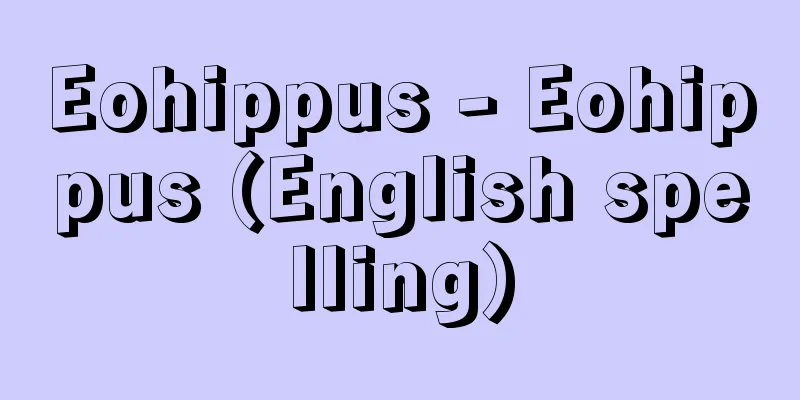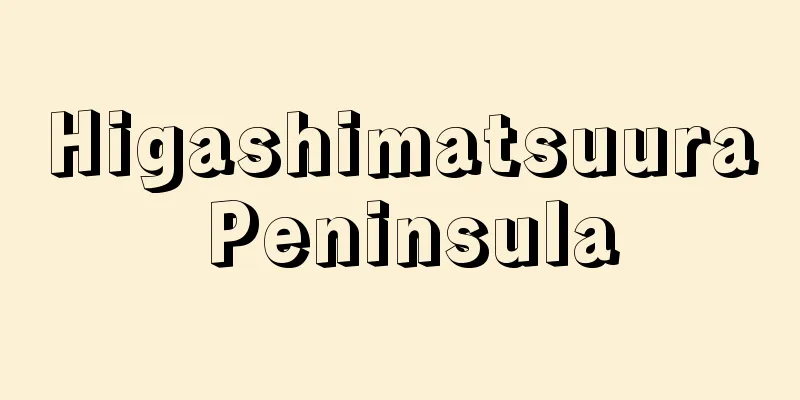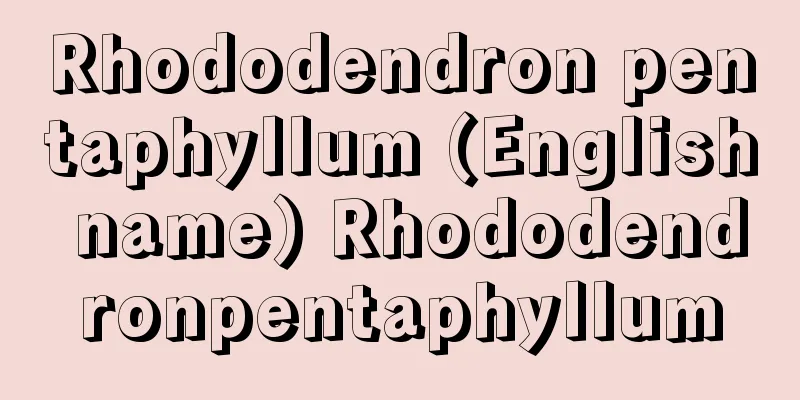Castella - Castella

|
It is one of the Nanban sweets imported to Japan during the Sengoku period. It is said that Portuguese missionaries brought it to Hirado, Nagasaki Prefecture, along with medical supplies in 1556 (Koji 2). The word "Kastella" comes from the Portuguese word Castella, which refers to the former Kingdom of Castile, which was located in the central to northern part of the eastern coast of the Iberian Peninsula, and means a sweet made there. When it was first introduced, it was made with milk and honey and was thought to be used to treat sick people, but around the Keicho period (1596-1615), it began to spread to the general public and was used as a sweet for tea ceremonies, becoming very popular. At the time, it was made with wheat flour, eggs, and white sugar, and the manufacturing process was not as complicated as it is today. Fukusaya in Nagasaki was founded in 1624 (Kan'ei 1), followed by Nagasakiya, Shooken, Bunmeido, and others in Nagasaki, and it eventually spread from the Kyoto-Osaka region to Edo. Thanks to the efforts and research of many people, including Nagasaki magistrate Murayama Toan, and over a long period of 400 years, the unique Japanese sense and techniques for making sweets were developed, and castella, a Japanese confectionery of today, was created. The basic ingredients for castella and their ratios are 50 grams of wheat flour (weak flour), 100 grams of eggs, and 100 grams of white sugar. It is very difficult to make because the amount of wheat flour is so small. No leavening agent is used, and the egg whites are added to the starter dough without losing their foam. Care must be taken with the flavor, moisture, and browning. [Fumiko Kobayashi] [Reference] |©Shogakukan "> Castella Source: Shogakukan Encyclopedia Nipponica About Encyclopedia Nipponica Information | Legend |
|
戦国時代、日本に輸入された南蛮(なんばん)菓子の一つ。1556年(弘治2)ポルトガルの宣教師が、長崎県の平戸(ひらど)に医療とともに伝えたといわれている。カステラの語源はポルトガル語のCastella、すなわちイベリア半島東岸中央から北部にかけての、かつてのカスティーリャ王国のことで、そこでつくられた菓子という意味であった。伝来当時は原料に牛乳や蜂蜜(はちみつ)が使われ、病人の治療用と思われていたが、慶長(けいちょう)年間(1596~1615)ごろには一般に広まり始め、茶席の菓子にも用いられ大流行したということである。当時は小麦粉、鶏卵、白砂糖でつくられ、製法もいまほど複雑ではなかった。長崎の福砂(ふくさ)屋の創業は1624年(寛永1)で、続いて長崎屋、松翁軒、文明堂などが長崎にでき、やがて京坂地方から江戸にも広まっていった。長崎代官の村山等安(とうあん)をはじめ多くの人々の努力と研究の積み重ねと、400年にわたる長い時を経て、日本人独特の製菓感覚と技術が開発され、和菓子として今日のカステラが創造された。カステラの基本材料とその配合の割合は、小麦粉(薄力粉)50グラム、鶏卵100グラム、白砂糖100グラムである。小麦粉の量が少ないのでつくるのは非常にむずかしい。膨張剤を使用しないで、卵白の起泡を消さないように種生地(たねきじ)の中へ入れる。そして風味、湿性、焼き色などに気をつける。 [小林文子] [参照項目] |©Shogakukan"> カステラ 出典 小学館 日本大百科全書(ニッポニカ)日本大百科全書(ニッポニカ)について 情報 | 凡例 |
<<: Castellammare di Stabia (English spelling)
>>: Kingdom of Castilla - Castilla Kingdom (English spelling)
Recommend
Household servant
〘Noun〙 Taxes imposed on households in the Middle A...
Yanagihara Byakuren - Yanagihara Byakuren/Yanagiwara Byakuren
A Japanese poet. Her real name was Akiko Yanagiwar...
Salmon shark
...Its English name is porbeagle, a compound word...
Geochelone platynota (English spelling)
… [Takahiro Matsui]. … *Some of the terminology t...
Non-bagging culture
This refers to fruit cultivation where developing ...
Capra, F.
...Furthermore, in the field of history, M. Murra...
Linoleic acid - Linoleic acid
It is a typical n-6 (ω6) polyunsaturated fatty ac...
Kolyma Mountains - Kolyma Mountains
A mountain range in the Magadan region of northeas...
Stūpa (English spelling)
From Sanskrit, originally meaning something that b...
Labriola, Antonio
Born: July 2, 1843, Cassino, near Naples Died: Feb...
Enka-style popular song
…In 1933, he won a contest sponsored by the Jiji ...
Virology - Virus Gaku
The study of viruses, a branch of microbiology. So...
Utsunomiya Toan
Year of death: October 10, 6th year of the Hoei pe...
Imperial History View
The Emperor-centered ultra-nationalistic view of ...
Irifunetei Senkyo Bridge
…He took the name Ogibashi from the 4th Ogizo. Th...









